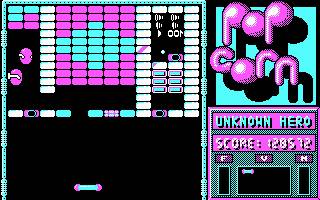

Trial registration Identifier: NCT02724462


Future larger studies are needed to further evaluate the efficacy of and methods for disseminating the iCanQuit application for smoking cessation among U.S. Findings suggest that iCanQuit had significantly higher short-term quit rates, descriptively higher long-term quit rates, and operated through its hypothesized mechanisms of action relative to QuitGuide. Increased acceptance of internal cues to smoke mediated the effect of treatment on cessation. iCanQuit vs QuitGuide participants were significantly more engaged and satisfied with the iCanQuit application. Retention rate was 89% at 12-months and did not differ by arm. Self-reported complete-case 30-day point-prevalence abstinence was 15% (33/226) for iCanQuit vs. A total of 550 rural participants were recruited from 43 U.S. Rural residence was determined by sub-county level Rural-Urban Commuting Area codes. Participants were enrolled between May 2017 and September 2018 and randomized to either receive iCanQuit or QuitGuide for 12-months. Clinical Practice Guidelines (USCPG)-based smartphone application (QuitGuide) for smoking cessation among rural participants enrolled in the two-arm randomized iCanQuit trial. In a secondary analysis, we determined the acceptability and efficacy of an Acceptance and Commitment Therapy (ACT)-based smartphone application (iCanQuit) relative to a U.S. Yet, accessible digital interventions for cessation focusing on rural populations are lacking. Limited access to evidence-based smoking cessation interventions among rural populations contributes to high rates of cigarette smoking and poor cessation outcomes. The results will be disseminated through peer-reviewed publication and at conferences by presentations. Data will be synthesised using narrative approaches and interpreted using content analysis.Įthics was not required for this systematic review. We will also assess the feasibility, acceptability and quality of research interventions of included articles, and provide graded recommendations based on the review outcomes. We will examine outcome data relating to intervention effectiveness (eg, point prevalence abstinence or continuous abstinence), as well as the BCTs used in included interventions and their relationship with intervention outcomes. We will include peer-reviewed journal articles published in English that examine a smoking cessation intervention delivered to people living in rural and remote areas in the USA, Canada and Australia. We will conduct a systematic review using seven scientific databases (EMBASE, MedLine, PsycINFO, CINAHL, Cochrane, Informit Health and Scopus). We aim to review the literature on smoking cessation interventions for people living in rural and remote areas to inform evidence about intervention effectiveness and mechanisms of action. Improved understanding of the contribution of BCTs for smoking cessation in the rural and remote population will support future intervention development. Behaviour change techniques (BCTs) are mechanisms of action derived from behaviour change theory, such as goal setting and reward. Smoking cessation interventions for people in rural and remote areas have been conducted, however little is known about their effectiveness or their mechanisms of action as well as the quality of such research. Physical and social isolation, greater exposure to pro-tobacco marketing, pro-tobacco social norms, and lower socioeconomic and educational levels are contributing to these higher smoking rates and lower quit rates.

Higher smoking rates contribute to greater tobacco-related disease and morbidity in rural and remote areas. Smoking rates among people living in rural and remote areas are higher and quit rates are lower over the past 10 years compared with people living in suburban and urban areas.


 0 kommentar(er)
0 kommentar(er)
